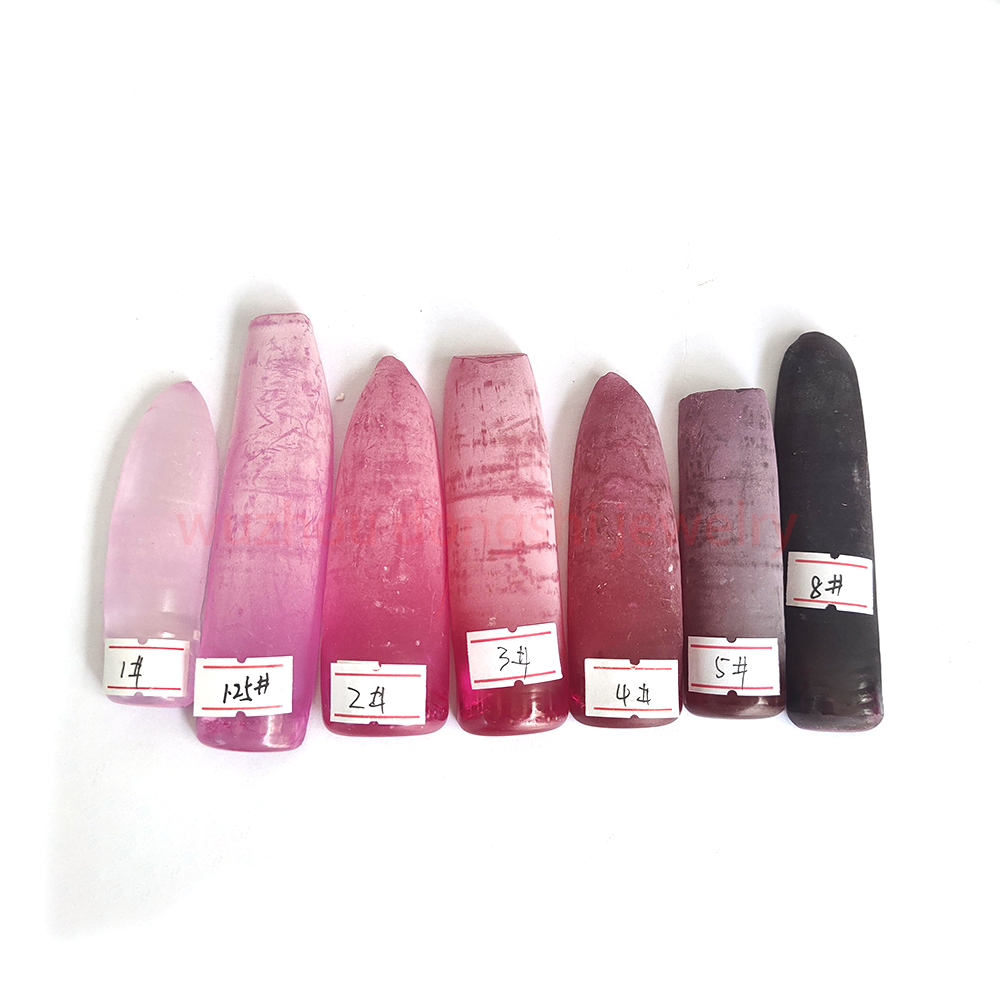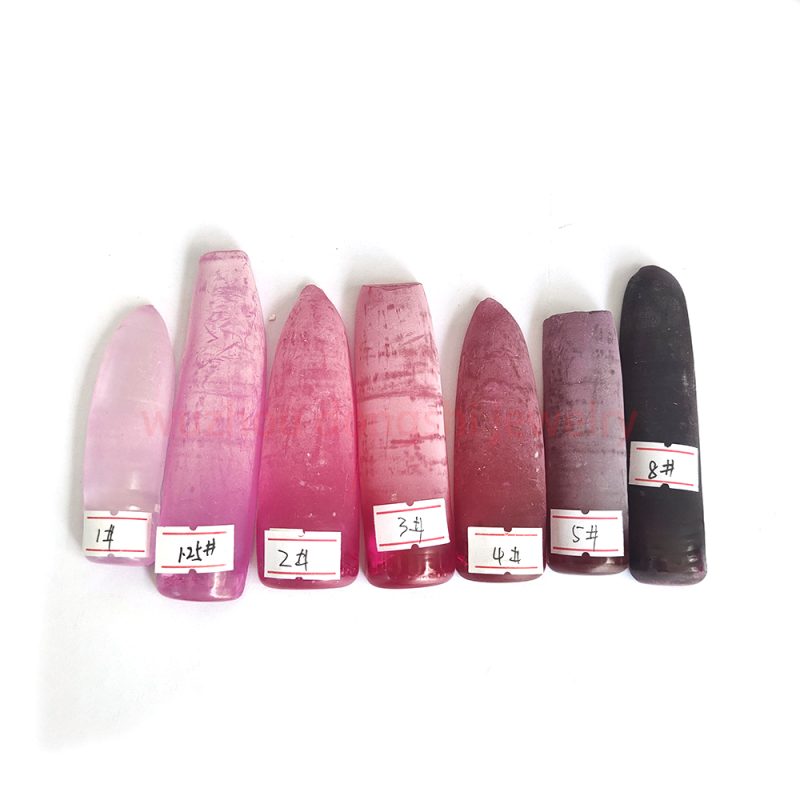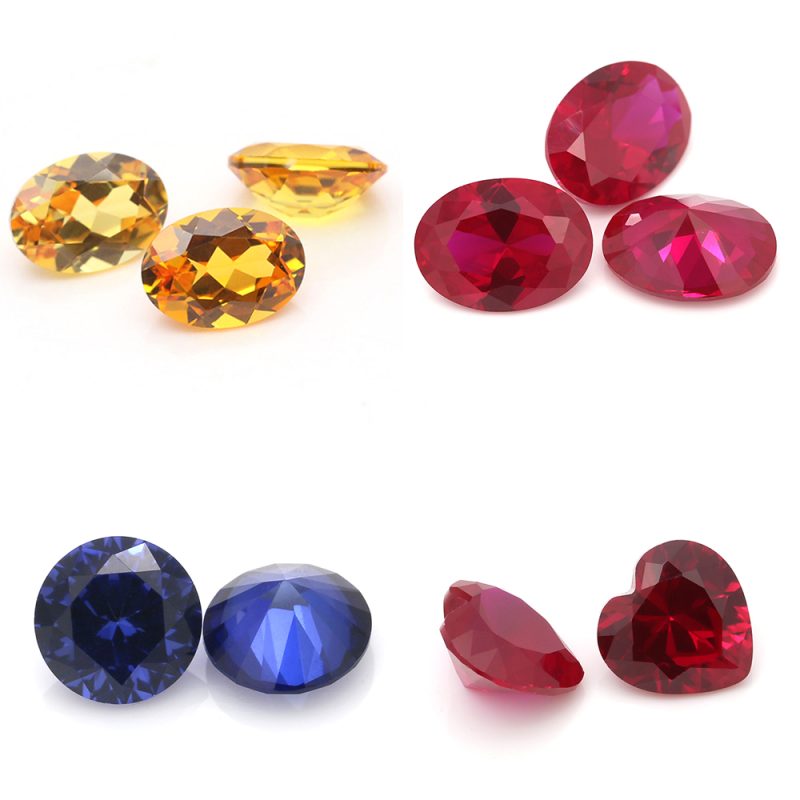Synthetic Corundum Rough Uncut Raw Material Ruby Sapphire

| Chemical Composition | Hardness | Density | Refractive Index | Dispersion(C-F) | Hert resistance |
| AI203 | 9Mohs | 3.61 | 1.73 | 0.012 | up to 1100 C |

Synthetic corundum is an important artificial material, mainly composed of aluminum oxide (Al203)
Cheng. Corundum has very high hardness, wear resistance, and high heat resistance, and is therefore widely used
In the industrial sector.
The preparation process of synthetic corundum is carried out through chemical reactions at high temperatures. A commonly used method
The method is to use alumina powder as raw material, and after specific processing, it is subjected to high temperature
Reacting with other additives such as alumina particles, boric acid, calcium carbonate, etc. pass through
Controlling reaction time, temperature, and pressure conditions can achieve the preparation of synthetic corundum.
In the process of synthesizing corundum, the role of additives is to regulate the growth rate and crystal structure of the crystal
Structure. For example, boric acid can promote crystal growth, while calcium carbonate can improve the structure of crystals
Stability. Meanwhile, by controlling the proportion of raw materials and reaction conditions, the rigidity can also be adjusted
The hardness, transparency, and color characteristics of jade.

The difference between natural corundum and synthetic corundum
1、 Source and generation method
Natural corundum
Formed in nature, it requires millions of years of geological processes such as high temperature and pressure, magmatic activity, etc.
The main component is alpha type alumina crystal (Al ₂ O3), containing trace elements such as Cr, Ti, Fe, etc.
Synthetic corundum
Made by artificially melting alumina at high temperature and controlling crystallization conditions (such as flame melting method) 16.
The main component is high-purity Al ₂ O ∝, and the types and contents of trace elements are controllable.
2、 Differences in physical properties
Hardness and toughness
Natural corundum has a Mohs hardness of 9 and good toughness of 18; Synthetic corundum has slightly higher hardness but slightly weaker toughness.
Color and Gloss
Natural corundum comes in a variety of colors (such as colorless, blue, red, gray, etc.) and has a glassy luster of 16;
Synthetic corundum has a more uniform color (such as red and blue), but its luster may be slightly artificial.
Density and Transparency
Natural corundum has a density of 3.9-4.1 g/cm ³ and often contains impurities, resulting in uneven transparency;
Synthetic corundum has a slightly lower density (3.6-3.9 g/cm ³), higher purity, and more consistent transparency.
3、 Internal features and structure
Package body and defects
Natural corundum contains natural inclusions (such as mineral crystals, cracks) and irregular color bands;
Synthetic corundum exhibits visible bubbles, unmelted powder, and regular color bands (such as arc-shaped growth patterns).
Crystal morphology
Natural corundum crystals are in the form of geometric polyhedra; Synthetic corundum is often in pear shaped or columnar crystal form.
4、 Application Fields
Natural corundum
Mainly used for jewelry (such as rubies and sapphires) and high-end carving crafts.
Synthetic corundum
Mainly used for industrial purposes, such as abrasives (grinding wheels, polishing powders), refractory materials, ceramic coatings, etc.
5、 Value and Identification
Economic value
Natural corundum has a high collection value of 67 due to its scarcity and natural beauty;
Synthetic corundum has low cost and is suitable for large-scale industrial applications.
Identification method
Observing the internal inclusions (naturally containing natural minerals, synthesized containing bubbles) through a microscope;
Detecting physical parameters such as density and refractive index (synthetic refractive index is usually slightly lower) 78.
Summary: There are significant differences between natural corundum and synthetic corundum in terms of their formation methods, physical properties, internal structure, and application fields. Natural corundum is known for its natural scarcity and unique beauty, while synthetic corundum meets industrial demand with controllable properties

















